Mackay council adopts 24/25 budget, rates to rise by 3.6 per cent
The Mackay council has approved an increase to rates to help fund crucial council services, while lowering a crucial discount for ratepayers. See what it’ll cost you, and what’s being funded.
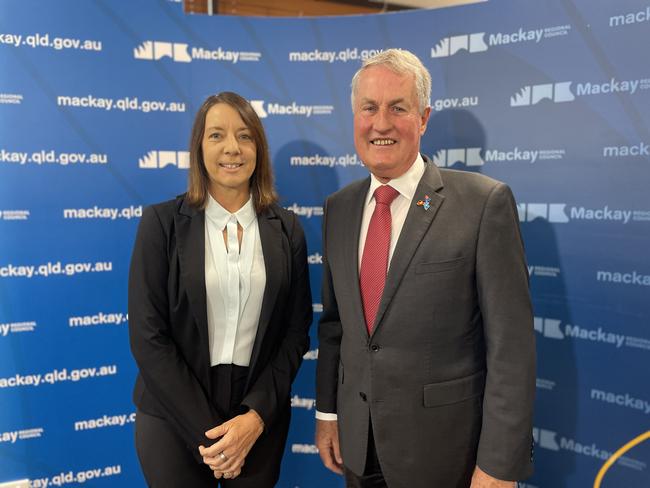
Mackay
Don't miss out on the headlines from Mackay. Followed categories will be added to My News.
The average Mackay ratepayer will be hit for another $133 a year to fund council services, as a new budget relies on a rate rise to stay out of deficit.
The Mackay Regional Council formally voted to approve the 24/25 budget at its meeting today, including a new capital spend of $130m as part of a $312m war chest.
Rates will increase in line with inflation, a 3.6 per cent rise year-on-year. Mackay council claims this is a roughly $133 increase for an average household over a year, which would pay $3623 in total.
But after the early payment discount was dropped from 10 per cent to 6 per cent, there’s an extra four per cent increase for ratepayers who get in first.
Utility charges and environment, roads, and disaster response levies have also been increased by 3.6 per cent.
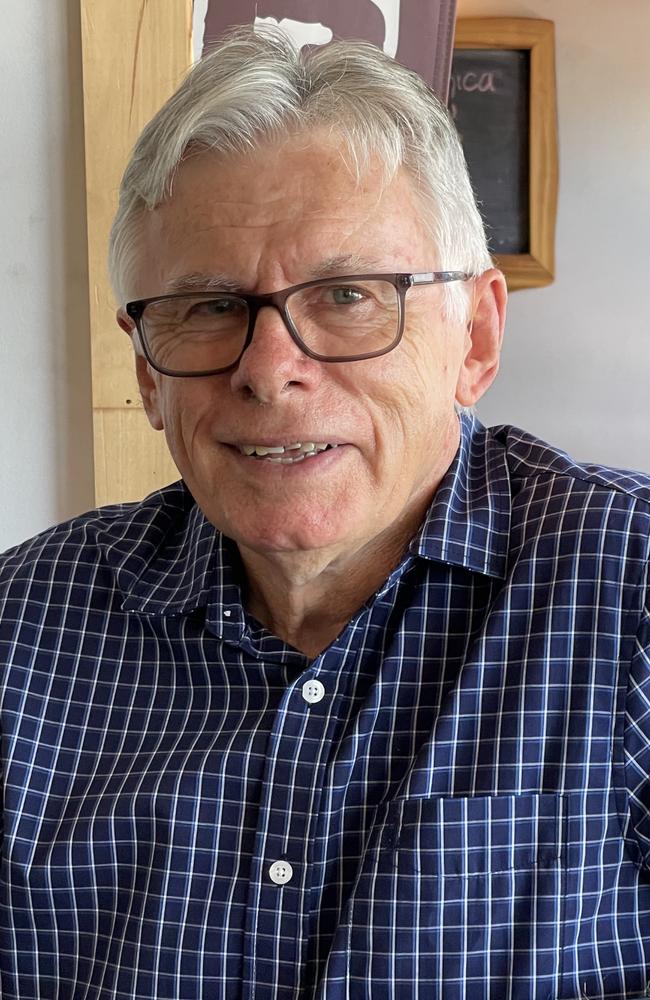
Councillor Peter Sheedy took exception to almost every item in the budget, joined by Councillor George Christensen and Councillor Nathenea MacRae, instead proffering rates capping as an alternative way to collect revenue to ensure “equity” for rural ratepayers, particularly canegrowers.
“I have endeavoured to obtain information on rate capping as a method for determining rates and I’ve been frustrated, I’ve been pushed back,” Mr Sheedy said.
This method had been previously dismissed by council and Mr Sheedy was sternly warned by Mayor Greg Williamson not to “cast aspersions against any members of council or any of the offices”.
Speaking after the vote, Mr Sheedy, a former Canegrowers executive, said the 3.6 per cent rise was closer to 8.2 per cent when taking into account the early payment discount was lowered from 10 per cent to six per cent.
“You can sugarcoat it all you like but it’s still a 8.2 per cent increase,” he said.
Mr Christensen echoed Mr Sheedy’s misgivings calling rural rates rises astronomical, egregious, unsustainable and unfair.
Mr Williamson took exception to Mr Christensen and Mr Sheedy’s assertions clarifying that of 1,337 rate notices being distributed to cane farmers, only three will face rates over $5,000, 188 will experience rises of less than $100 and 645 ratepayers will experience a decrease in rates.
Councillor Martin Bella, himself a rural ratepayer, took the opportunity to challenge the former Jacko Team members Mr Christensen and Mrs MacRae, who had campaigned on a platform of reducing rates but, according to Mr Bella, had been unable to explain their plan in the lead up to the budget.
The majority of ‘fees and charges’ have also increased by 5.4 per cent, according to council budget documents — which notes the full list will be made available on the council website.
That covers waste disposal fees, development and planning fees, and local law compliance fees.
For projects, $11.7m has been allocated for the Northern Beaches Community Hub, which recently won $15m in complementary federal government funding.
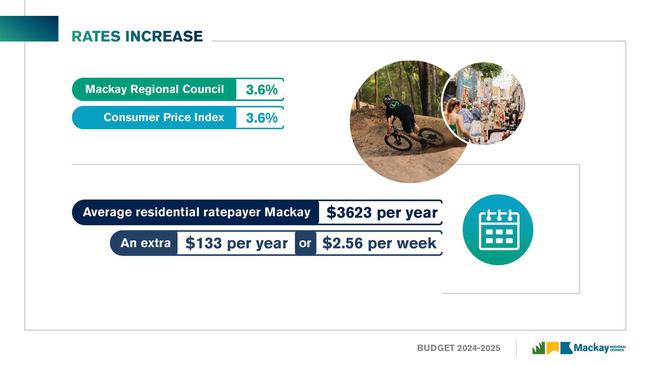
Bloomsbury’s new water supply scheme will cost $5.9m out of the $16.2m being spent on water and sewerage upgrades.
The Mackay Waterfront project will receive $4.6m covering pedestrian and transport upgrades along with designs for the 8 River St site.
The second stage of the Resource Centre of Excellence designs have been allocated $3.8m.
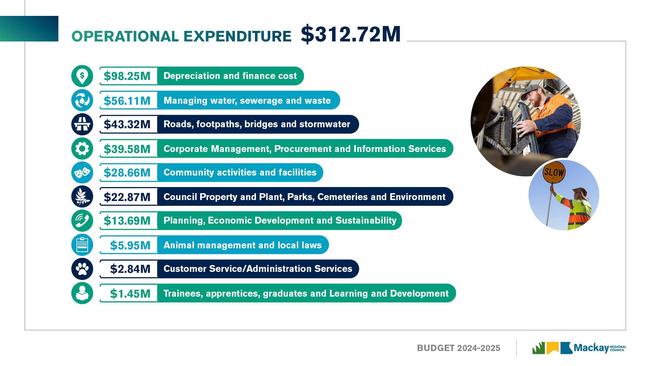
But one of the biggest single line items in the budget is depreciation and finance costs, accounting for almost one third of the council’s operational expenditure, level with employee costs and materials/services. That will account for just under $100m of the total money spent by council.
Mayor Williamson said the budget delivered on council’s expressed desire over many years for rates increases to be in line with, or lower than, inflation.
“To be able to manage this in a climate of escalating costs while maintaining, or improving service levels, is a testament to the hard work of staff in driving efficiencies throughout the organisation,” he said.
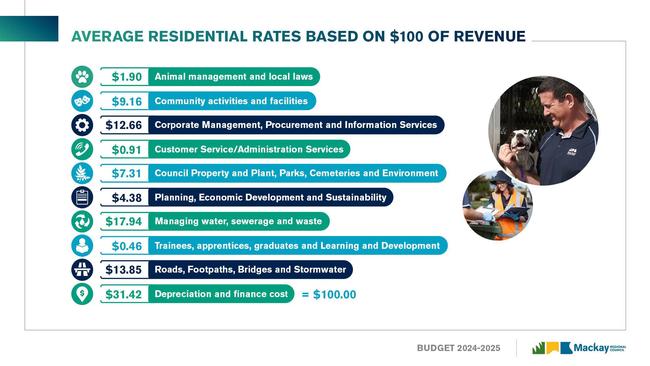
“As well as increased cost pressures on council, we’ve had to factor in an increase in depreciation costs of $11.38 million this financial year, reflecting asset revaluations and construction cost increases.”
Some outside money has also tapered off, including a drop of Federal Assistance Grants from $5m to $4.5m year-on-year.
CEO Scott Owen said the budget struck a balance between service levels and an extensive capital program, without burdening rate payers.
He said the forecast surplus was financially responsible as it meant council was raising only the rates revenue it believed was needed to deliver infrastructure and services for the region.
“That is why we’re able to keep the rates rise at 3.6 per cent, which is in line with CPI, with no reduction in services,’’ Mr Owen said.
The Budget was passed with Mayor Greg Williamson, Deputy mayor Belinda Hassan, Councillors Alison Jones Heath Paton, Namarca Corowa, Martin Bella and Karen May voting for, with Councillors George Christensen, Nathenea MacRae, Peter Sheedy and Ash-Lee Johnson voting against.




